Basic knowledge of testing coffee beans in Colombian "Gaixia" coffee cups
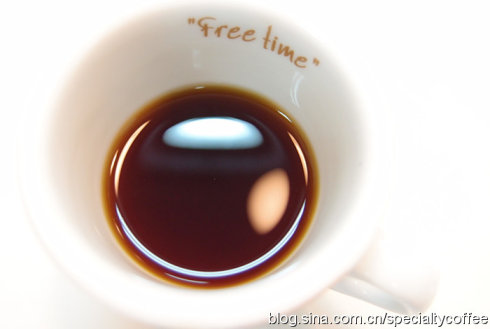
Geisha is an Arabica coffee variety from Geisha Mountain in southwestern Ethiopia, which is transliterated as "Geisha". Because the Japanese pronunciation of "geisha" is similar to Geisha, Geisha is called "Geisha" coffee in Japan. I think it is easier to communicate with foreign countries by transliteration of "Gaixia" in Chinese.
According to the Panamanian Emerald Manor website, "Gaisha" coffee seeds were taken from Geisha Mountain (Mount Gaisha) in southwestern Ethiopia in 1931, transplanted to Kenya in 1931, replanted in Tanzania in 1936 and introduced to Costa Rica in 1953. It is unknown when they will be introduced to Jaramillo Manor in Panama. After the Price Peterson family, who only knew the Emerald Farm (Hacienda La Esmeralda) of Panama, bought the Galamie Manor in 1996, they found that the coffee flavor on the edge of the estate was unique, so they took part in the 2004 Panama "COE" competition, never wanted to become famous, and won awards almost every year since. Later, it was identified that the variety originated from Ethiopia's "Gaixia Mountain", so it was called "Gaixia" coffee. Panamanian Gesha coffee sold for a sky-high price of nearly $290 per kilogram.
The Herrera family of Hope Farm in Colombia introduced Gesha coffee from the Emerald Manor of Panama in 2007. Although it failed at first, after years of hard work, it won the first prize in the COTY-Coffees of the Year held by the American Fine Coffee Association in Houston in April 2011. for details, see the American Fine Coffee Association 2011 Global Best Coffee Competition.
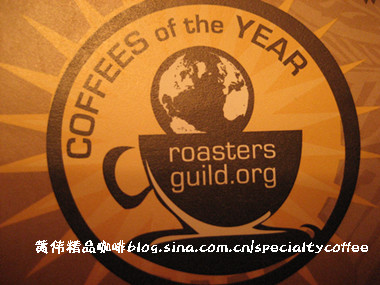
David Piza C, who majored in industrial engineering from the University of Los Angeles at Bogota, is a professional coffee cup tester and judge of the barista competition in Colombia. He came to China in August this year and brought a number of high-quality manor boutique coffee, including Colombia's Geisha. The author bakes the coffee according to the raw bean information provided by Pei Daxing and the expected baking curve in his mind. To the surprise of everyone present, compared with the samples brought by Pei Daxing, there is almost no difference between the samples baked by the author and Pei Daxing (before the author baked, Pei Daxing did not take out the samples they had been thinking about baking in Colombia).
Colombian "Gaisha" coffee:
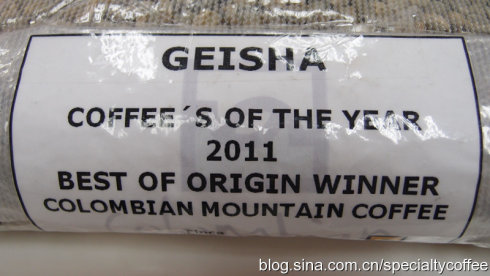
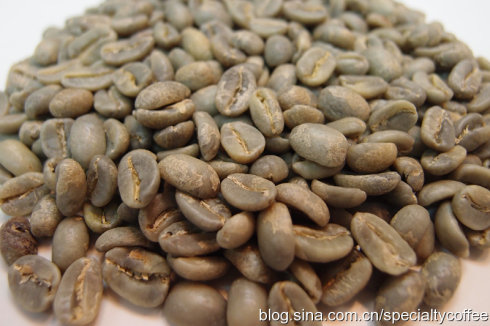
On the third day after baking, the author, together with Pei Daxing and two friends, conducted a cup test on Colombian Gesha coffee in Wangjing, Beijing. There are three types of coffee: one is a sample of Gesha baked in Colombia, and the other two are two batches of Colombian Gesha baked by the author in Beijing, each with three cups and the standard of SCAA is 5 cups.
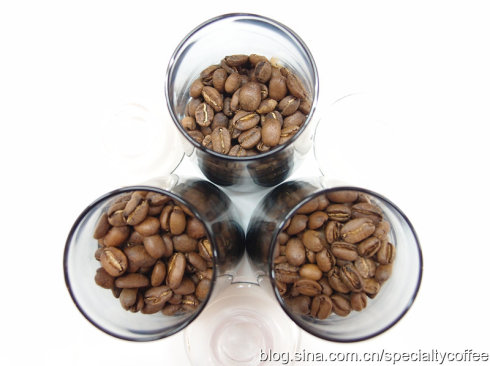
Grind into coffee particles:

Smell the incense after breaking the residue:
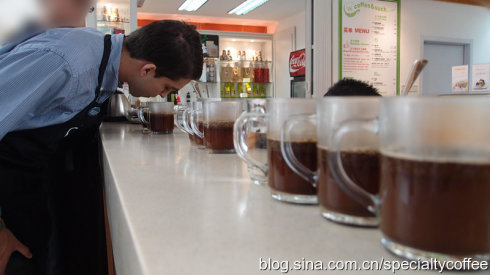
To remove the scum:
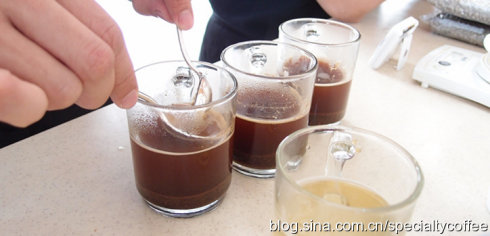
Begin to taste:
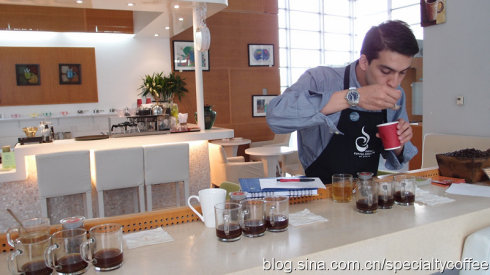
Record at any time:
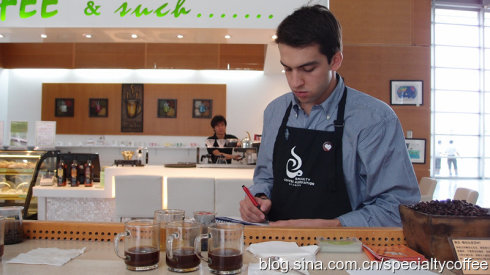
Summing up the test records of the four cups, it is concluded that the first place is the same batch of Gaixia baked by the author in Beijing and baked in Colombia.
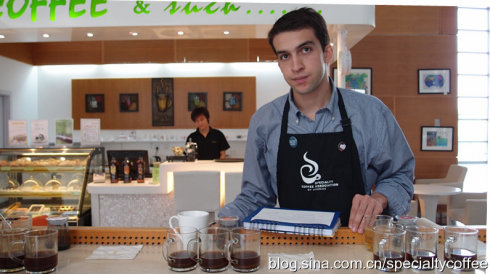
Colombian Gesha coffee brewed by hand after the cup test:

Colombian Gesa Coffee features lively and bright acidity, rich aromas of flowers and fruit, medium thickness, balanced and supple taste and a long, sweet finish.
Special thank-you venue: dynamic Coffee Wangjing Coffee Shop. Wen and Photography: Huang Wei
Important Notice :
前街咖啡 FrontStreet Coffee has moved to new addredd:
FrontStreet Coffee Address: 315,Donghua East Road,GuangZhou
Tel:020 38364473
- Prev
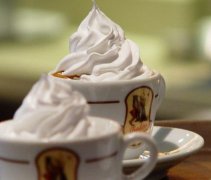
Con Panna (Campbell Coffee) DIY diagram
This time we are going to make Con Panna, the simplest Italian fancy coffee, with whipped cream on the basis of Espresso. It sounds easy, but it's not easy to do it well. Italian coffee is famous all over the world. If you want to taste the classic espresso, you have to go to the Italian Cafe. This time, nine of us came to Coff.
- Next
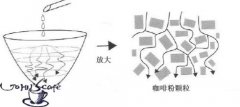
The central water injection technique of hand-brewing coffee
I have been using the central water injection method since I touched the hand, that is, I only inject water in the center without spreading it, and a small hole will be formed after extraction. As opposed to the central water injection method is the immersion method, that is, the whole coffee noodle is injected with water. Many friends feel that the central water injection method may not be able to extract completely, but my feeling is that the central water injection can extract completely, but it is the immersion method.
Related
- Detailed explanation of Jadeite planting Land in Panamanian Jadeite Manor introduction to the grading system of Jadeite competitive bidding, Red bid, Green bid and Rose Summer
- Story of Coffee planting in Brenka region of Costa Rica Stonehenge Manor anaerobic heavy honey treatment of flavor mouth
- What's on the barrel of Blue Mountain Coffee beans?
- Can American coffee also pull flowers? How to use hot American style to pull out a good-looking pattern?
- Can you make a cold extract with coffee beans? What is the right proportion for cold-extracted coffee formula?
- Indonesian PWN Gold Mandrine Coffee Origin Features Flavor How to Chong? Mandolin coffee is American.
- A brief introduction to the flavor characteristics of Brazilian yellow bourbon coffee beans
- What is the effect of different water quality on the flavor of cold-extracted coffee? What kind of water is best for brewing coffee?
- Why do you think of Rose Summer whenever you mention Panamanian coffee?
- Introduction to the characteristics of authentic blue mountain coffee bean producing areas? What is the CIB Coffee Authority in Jamaica?

